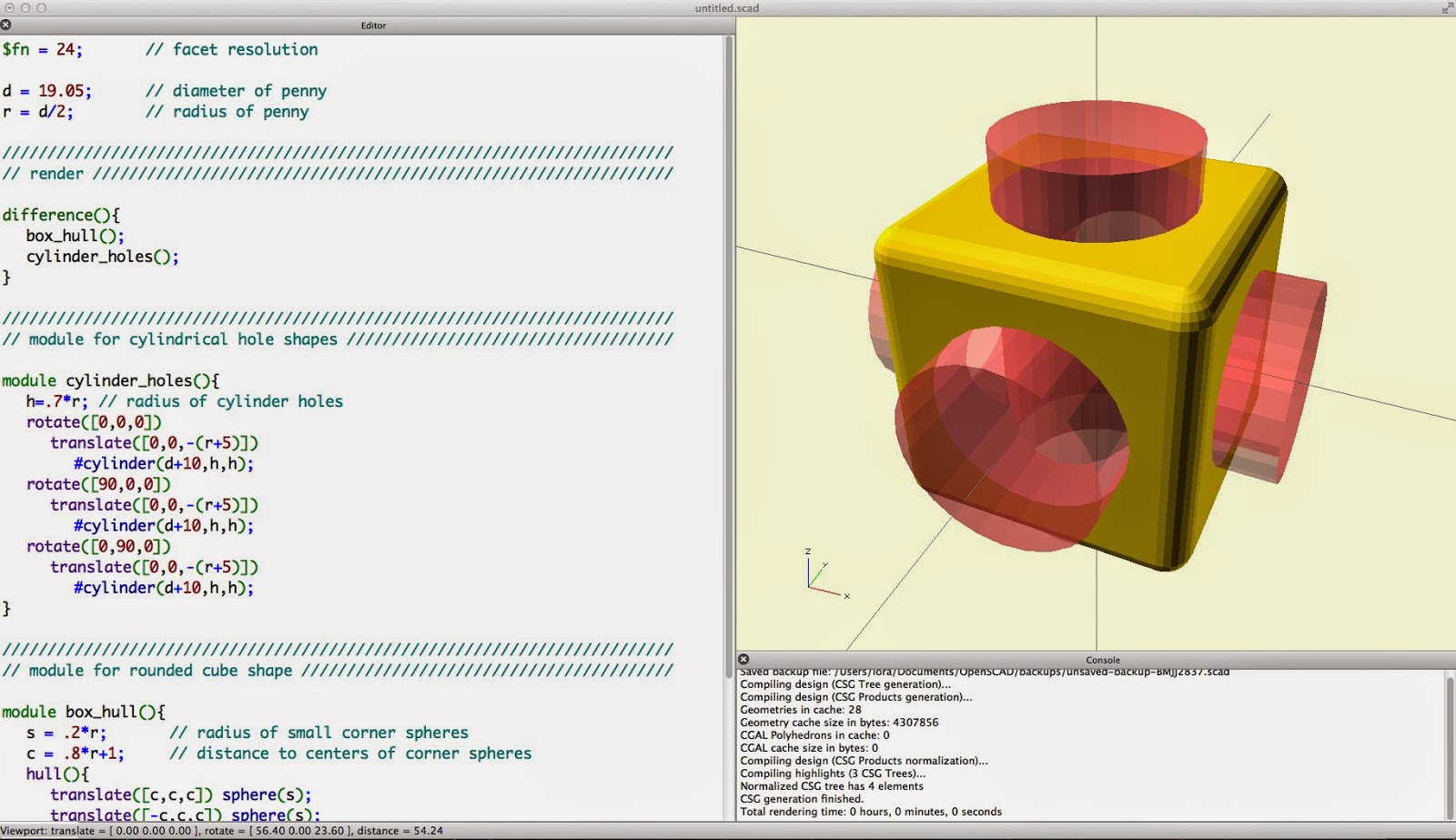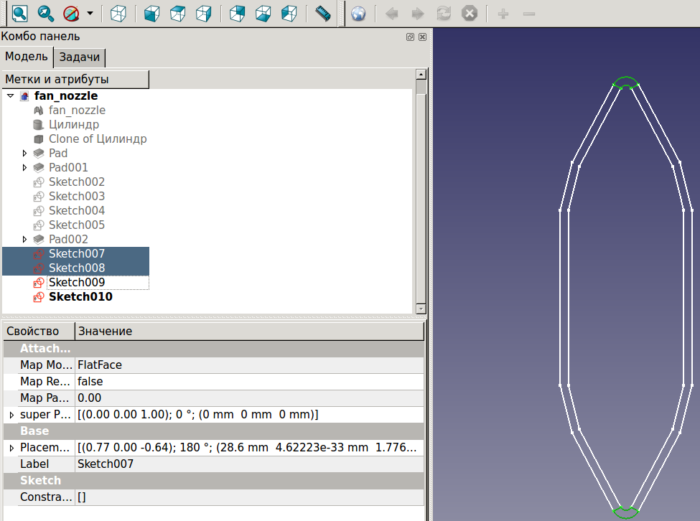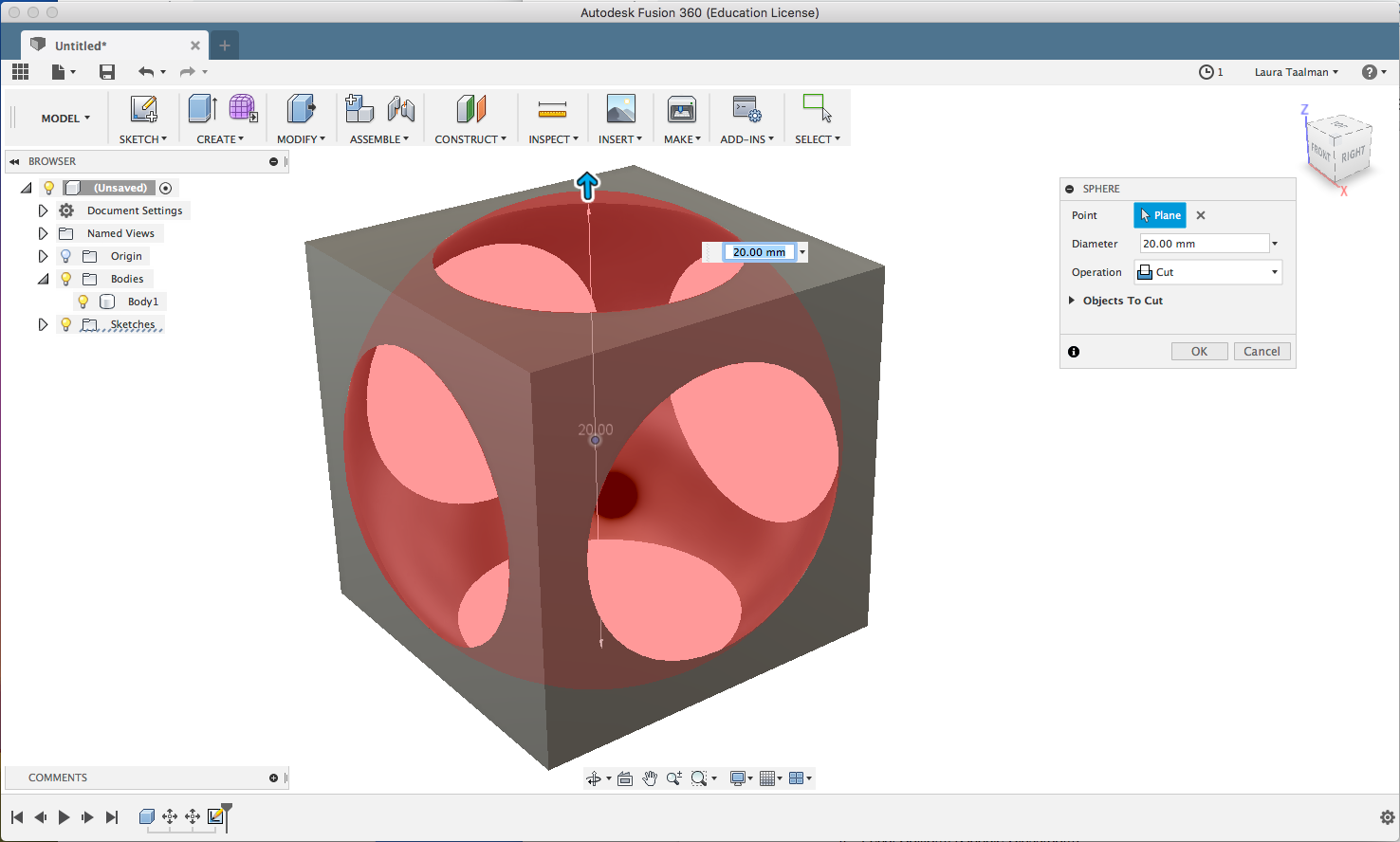

Adding it to intersection() would be nice, but then you'd also have to add it to difference() to handle similar cases, and import() to split up imported geometry into sub-volumes, etc.I was working on a project in OpenSCAD that needed smooth curves. render(union=false) - to flatten geometry to zero or more sub-volumes. To make the solution more generally useful (and possibly easier to implement) I would propose adding the expansion option to render() - i.e. Linear_extrude(height=5,r=1,chamfer_limit=) I'd be quite happy with a fast, 3D/polyhedral variant of offset(delta=dr) children(i). (the irregularities in the mesh are an artifact of Clipper's angular

Require compensation for the inflation of the outer dimensions of the shape. The second advantageĬompared to the minkowski solution is that changing rounding radii doesn't When things like these render in a few milliseconds. I added a chamfer_limit= parameter, that defaults to 90°, whichĭisables the feature (does this makes sense or is 90-angle a more logical No, with a truncated teardrop the bottom is round until it slopes more thanĤ5, at which point it becomes a 45 chamfer. It's just not very evenly distributed" - William Gibson Hard to get around that without significantly complicating the syntax though.Īs it relates to fillets, once there's a 3D variant of the offset operator a general-purpose fillet operator/module could work like this: This may lead to small cracks due to floating point inaccuracies.Īlso, this assumes that the connecting surface is a flat surface which accepts a chamfer all the way around. One challenge I see is that this for chamfers and internal fillets, you need to position the extruded object exactly where it touches the larger connecting object. I think I am going to do another experiment :-) Solid volume point of view they could be made with an arbitrary tolerance Optimal meshes (from a triangle / vertex count perspective), but from a The CGAL Surface Mesher with a hybrid of the CGAL::Polyhedral_oracle and It is probably quite hard to do thatĪutomatically at a generic mesh level. Into linear segments by repeating the geometry of the connecting node, i.e.Īnd making the evaluator smart enough to not need to run this though a Nefįor fillets, it would of course have been great to be able to specify themįor unions (like ImplicitCAD does). more than one cylinder on top of the box in theĮxample above), or even graph-like structures. Ideally, you want to beĪble to specify trees (e.g. Translate() circle(r=5, $chamfer=.5) īut this syntax is limited to a single linear loft. What I have been thinking about is something conceptually like: – despite its simplicity – to provide something quite useful for a lot of

Yeah, I have been toying with a more advanced syntax, but this syntax seemed

Significantly complicating the syntax though. Translate() linear_extrude(height=10 +Īlso, this assumes that the connecting surface is a flat surface whichĪccepts a chamfer all the way around.
#Openscad loft archive#
Sent from the OpenSCAD mailing list archive at. Linear_extrude(height=5,r=,chamfer=)Ĭould this be worth pursuing further? Compared to a Minkowski-based Translate() linear_extrude(height=10 + 2*eps,r=-1,convexity=3) The sample below and the rendering should be Here is an experiment I did with anĮxtension to linear_extrude(). Complex generalized extrusion and lofting is nice and all, but sometimes you


 0 kommentar(er)
0 kommentar(er)
